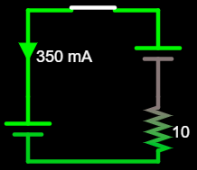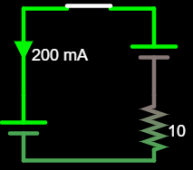Terrapin
New Member
.... I certainly believed so. But I just came across a debate on an RV forum. I cut and pasted the last post below. The responce is outlandish to me...though he claims a history in the field. I am wondering if the guy is just living in the past, prior to computerized sensing and adjusting capabilities and he's just no up to date on new fangled whippersnapper high faluttin' techno stuff. Here it is:
Quote:
Since I have designed chargers operating on military equipment and spent nearly 11 years testing batteries and chargers, I’ll respectfully tell you are wrong. Float stage is the only time chargers adjust anything, and that is only voltage. There is no absorption or bulk stage on a charger. That is a description of how the battery state affects voltage and current, but the charger does nothing different. A charger is set at a constant voltage and current throughout the charging process (neglecting temperature changes). The battery determines the actual voltage and current at all times. When deeply discharged, the battery draws maximum current from the charger and the charger puts out as much voltage as it can up to it’s set point.
The point when the charger is finally able to reach its set voltage is when the current begins to decline, but the charger does nothing at all at that point. It never adjusts voltage or current. It continues to function as a simple dumb fixed voltage DC power supply until it senses that the current has dropped below a specific fraction of C. Since commercial charger manufacturers can’t know what battery is hooked to the charger, they often choose 1A as the point where float mode begins.
The idea that chargers are smart or that they have multiple stages is nothing but marketing. A smart charger is a simple fixed voltage DC supply that switches to float voltage when it detects that the battery is drawing 1A or less. A few specialized AGM chargers have a timed finishing stage which runs a slightly elevated float voltage for a few hours at the beginning of the float, and converters tend to have a mode where the charger operates at an intermediate voltage when small loads are applied to the system after full charge is reached.
Quote:
The point when the charger is finally able to reach its set voltage is when the current begins to decline, but the charger does nothing at all at that point. It never adjusts voltage or current. It continues to function as a simple dumb fixed voltage DC power supply until it senses that the current has dropped below a specific fraction of C. Since commercial charger manufacturers can’t know what battery is hooked to the charger, they often choose 1A as the point where float mode begins.
The idea that chargers are smart or that they have multiple stages is nothing but marketing. A smart charger is a simple fixed voltage DC supply that switches to float voltage when it detects that the battery is drawing 1A or less. A few specialized AGM chargers have a timed finishing stage which runs a slightly elevated float voltage for a few hours at the beginning of the float, and converters tend to have a mode where the charger operates at an intermediate voltage when small loads are applied to the system after full charge is reached.






